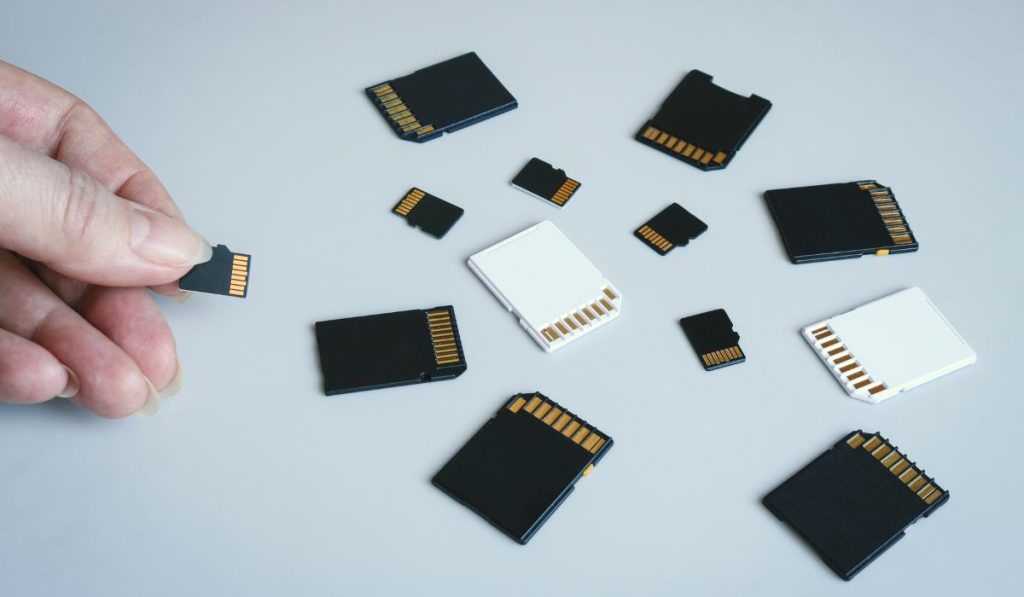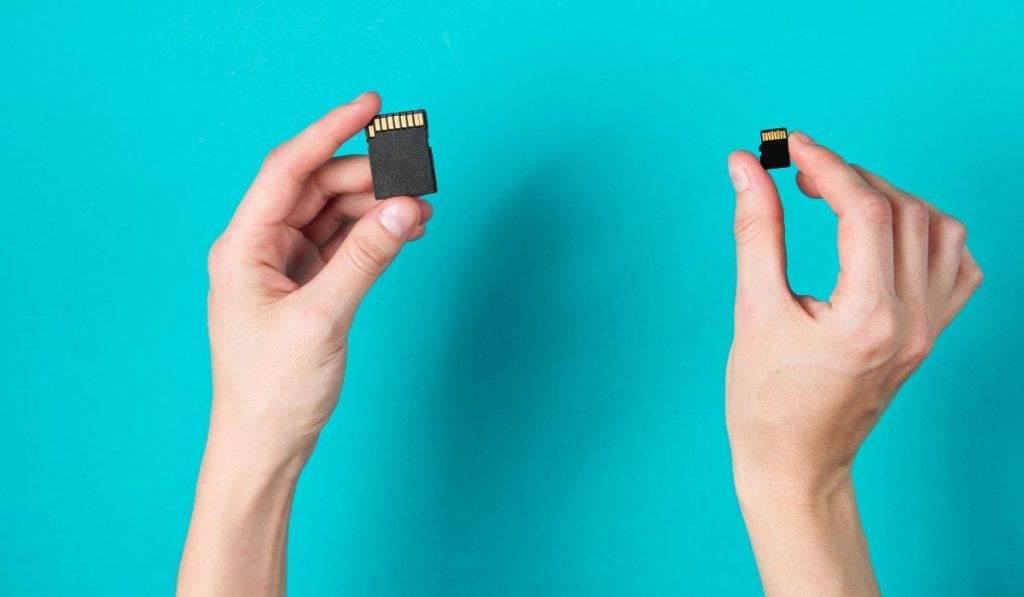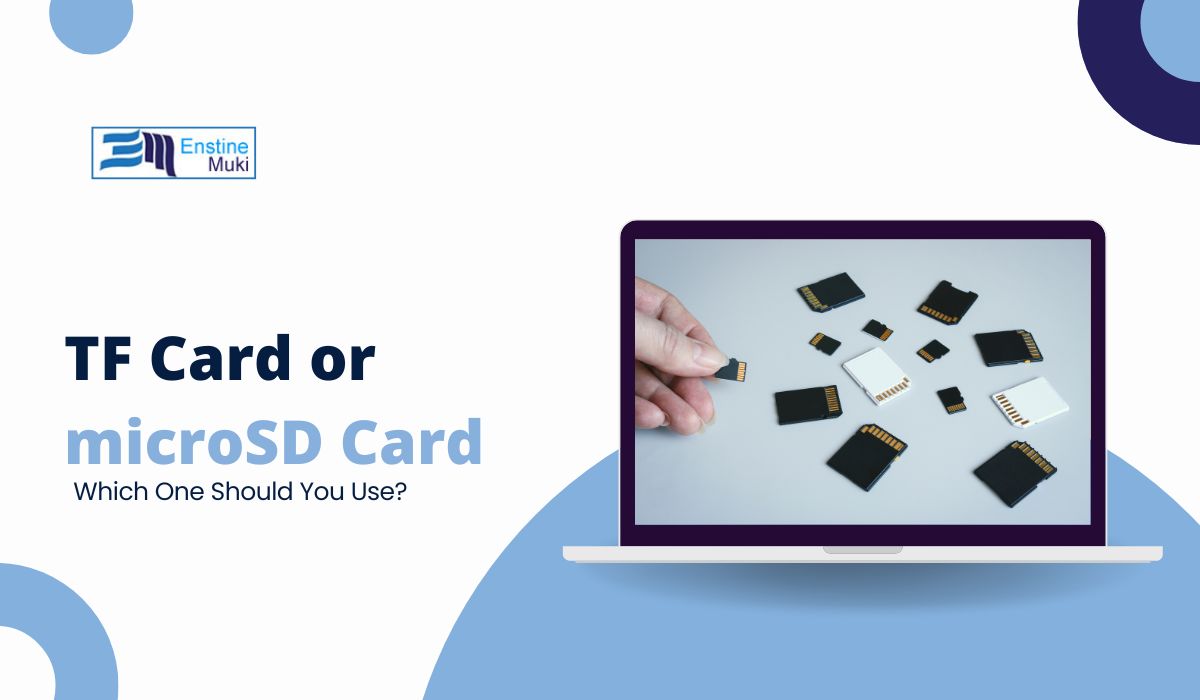If you’ve ever shopped for memory cards for your phone, camera, or tablet, you might have come across terms like TF card and microSD card. It can be a bit confusing—are they the same? Are they different? Which one should you pick?
Let’s clear up any confusion and explain what these cards are, how they compare, and which one is the right choice for your device.
What Is a TF Card?
A TF card, also known as a TransFlash card, was introduced by SanDisk in 2004 as a compact version of the standard SD card. TF cards were initially created to fit mobile phones, which had smaller slots compared to regular SD cards. These cards provided an easy way to add extra storage to mobile devices that couldn’t use larger SD cards.
These tiny cards are used to store all kinds of data, like music, photos, apps, and more. They are especially handy for devices that need more storage without taking up a lot of space. Over time, TF cards were rebranded as microSD cards, which leads us to…
What Is a microSD Card?
 A microSD card is basically the same thing as a TF card. It’s just a newer name that has become more popular and widely used. Today, microSD cards are the industry standard for many different devices, including smartphones, cameras, tablets, and even gaming consoles like the Nintendo Switch. Their small size and versatility have made them the go-to choice for adding extra storage to all kinds of modern devices.
A microSD card is basically the same thing as a TF card. It’s just a newer name that has become more popular and widely used. Today, microSD cards are the industry standard for many different devices, including smartphones, cameras, tablets, and even gaming consoles like the Nintendo Switch. Their small size and versatility have made them the go-to choice for adding extra storage to all kinds of modern devices.
microSD cards are used to store apps, photos, videos, and much more. They can even be used to run operating systems on small devices like the Raspberry Pi, which makes them very useful for hobbyists and developers who need lightweight, portable storage. Whether you’re using them for saving files or running a whole operating system, microSD cards are very flexible and reliable.
Differences Between TF Cards and microSD Cards

Origin and Naming
TF cards were originally called TransFlash cards when introduced by SanDisk. Later, they were rebranded as microSD cards. Despite the name change, TF cards and microSD cards are the same in size, function, and purpose. They work the same way and fit the same devices.
Applications and Uses
TF cards were commonly used in early mobile phones for extra storage. Today, microSD cards have replaced them and are used in many electronic devices like action cameras, drones, and tablets. They make it easy to store photos, videos, and other files.
Functional Differences
There are no significant technical differences between TF cards and microSD cards. Both are the same size and perform the same. They support SDIO, which means they can do more than just store files, like enabling GPS or Bluetooth features.
Compatibility Between TF Cards and microSD Cards

TF cards and microSD cards are the same in size and function, which means they are fully interchangeable. If a device works with a microSD card, it will also accept a TF card. You can use these cards in mobile phones, cameras, and any device that supports microSD.
Always check your device’s specifications to make sure the card will work. Sometimes, you may need an adapter (for example, when using a microSD card in a full-size SD slot).
Types of microSD Cards
Although TF and microSD cards are the same, microSD cards come in different sizes and storage types:
- Standard Capacity (SDSC): Up to 2GB.
- High Capacity (SDHC): Between 2GB and 32GB.
- Extended Capacity (SDXC): Up to 2TB.
- Ultra Capacity (SDUC): More than 2TB, up to 128TB.
The card you pick depends on how much storage you need. For example, if you’re using it for a camera or drone, you may need more storage and a faster write speed for recording videos.
Best Uses for TF and microSD Cards
Here’s a quick guide on the best uses for these cards:
- Mobile Phones and Tablets: Both TF and microSD cards work great for expanding storage for photos, videos, and apps.
- Cameras and Drones: For recording high-quality video, choose a high-speed microSD/TF card with a fast write speed.
- Gaming Consoles and Raspberry Pi: If you’re using a microSD/TF card for gaming or running operating systems, you’ll want a high-capacity card with fast read/write speeds for smooth performance.
How to Choose Between TF and microSD Cards
Here are some factors to consider when selecting the right card:
- Capacity: Choose based on how much storage you need.
- Speed Class: Look for Class 10 or UHS-I/UHS-II for better performance, especially if you’re recording video.
- Durability: Consider waterproof, shockproof, or temperature-proof cards for use in rugged environments or outdoors.
- Price: Generally, microSD cards are more widely available and affordable due to their mainstream use.
Wrapping Up!
In short, TF cards and microSD cards are essentially the same thing. They have the same size, functionality, and performance. The difference is mainly in the branding and history. Whether you choose a TF card or a microSD card, the most important thing is to pick one that meets your storage and speed needs.
Still have questions about which card to choose? Drop a comment below, and we’ll help you out! And if you found this article helpful, share it with your friends so they can learn more about storage options too!

